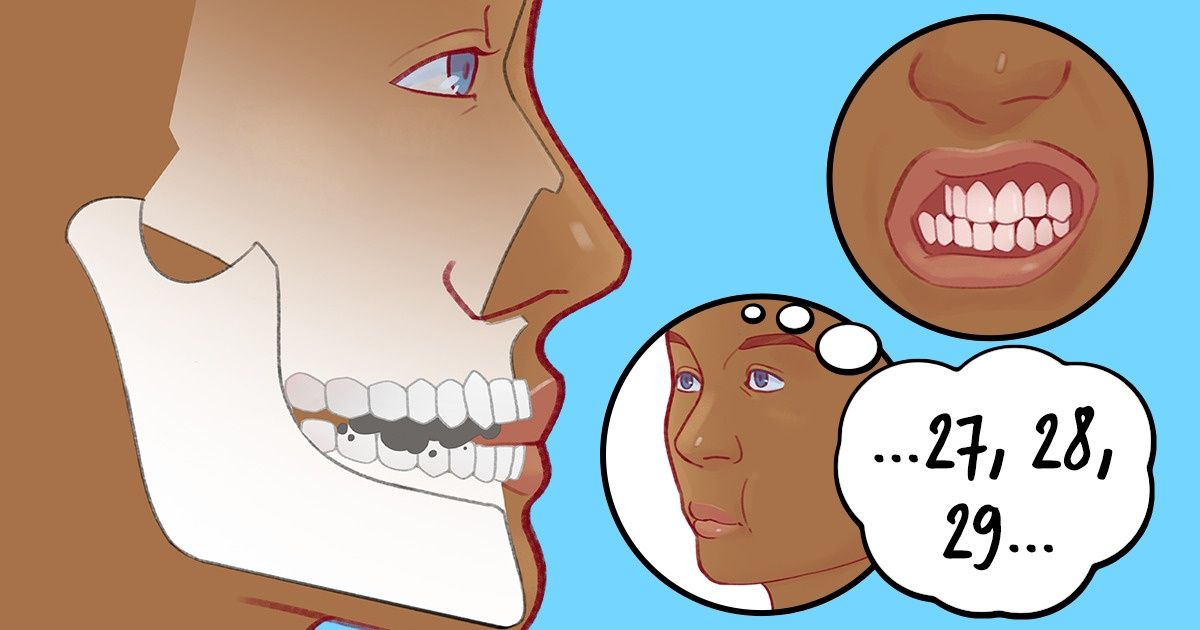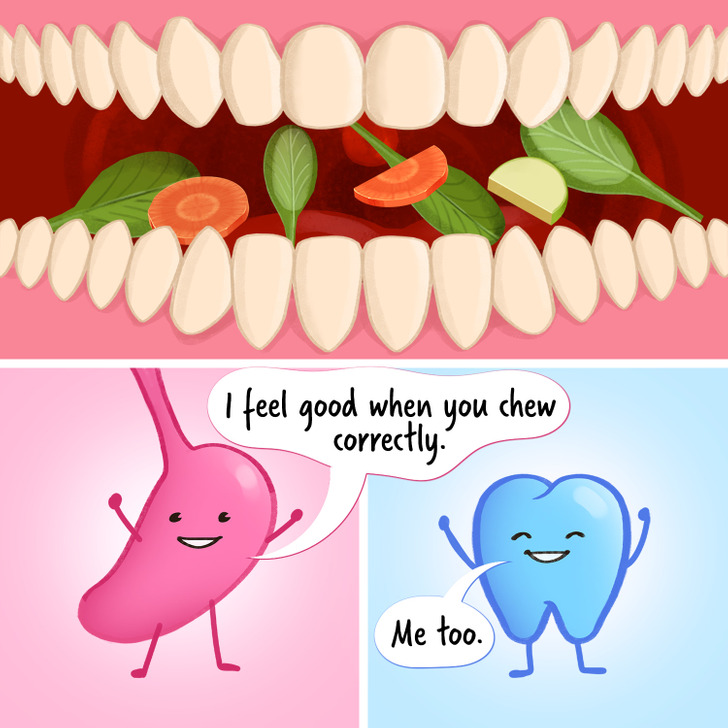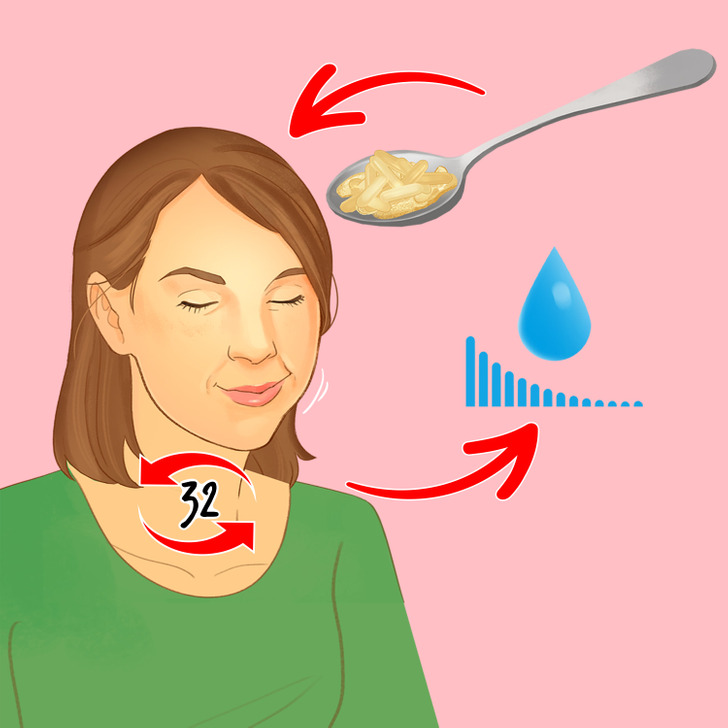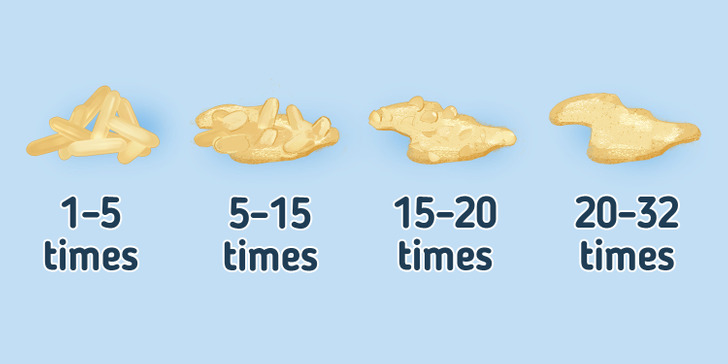
How to Chew Correctly

It might seem that’s it’s impossible to chew food incorrectly. However, there is the right way to do it even for an everyday action like this.
5-Minute Crafts found out why it’s important to chew food thoroughly and how to do it correctly.
The purpose of chewing food

Chewing is the first step in digestion. Saliva secretes enzymes that help break down foods and help absorb nutrients. The better the food is chewed, the less the esophagus is loaded.
The correct way of chewing solves several tasks:
- Decreases snack intake
- Dissolves food
- Promotes better absorption of nutrients
- Promotes the production of extra saliva, which mineralizes the teeth and reduces the likelihood of tooth decay
Scientific fact: it requires about 20-25 minutes to inform the brain that the body is not hungry. That’s why long chewing helps to avoid overeating.
According to a study, when people increased their number of chews up to 40 times, their food intake decreased by 11.9%.
Also, chewing food until the lumps are gone helps the body burn a few more calories. Namely, energy consumption increases by 10 calories when 300 calories of food is consumed. The value seems small, but a total of about 1,000 calories can be burned in a month just through more thorough chewing.
How to chew food correctly

Here are a couple of simple pieces of advice that can help you learn to chew food correctly:
- The food should fit in the spoon or fork well and it should not be falling off the sides.
- Chew food with your jaws rotating slightly, with the mouth closed, and with your tongue helping to move the food.
- Don’t hurry, chew slowly. You can count to 32 with every new bite you put in your mouth. However, since it’s not very convenient, you can simply make sure that the food in your mouth has lost its shape and has taken on a watery consistency.
- Try not to drink too much liquid until you swallow the chewed food. Drinks can mix the enzymes released to break down food, thereby slowing down the digestion process.
Experiment

You can conduct this experiment yourself when eating.
You’ll need: food and cutlery
Boiled rice was used in this experiment. 1 tbsp of it was placed into the mouth and it was chewed several times.
Results:
- Up to 5 times: rice partially retains its consistency, about 50–70% of the grains remained intact or almost intact.
- From 5 to 15 times: the consistency becomes similar to mashed potatoes, most of the grains are chewed, occasionally encounter small pieces.
- From 15 to 20 times: rice gradually melts in the mouth, no big pieces are left.
- From 20 to 32 times: the grains are almost completely dissolved by the 32nd chewing cycle, making the food take on a watery consistency.